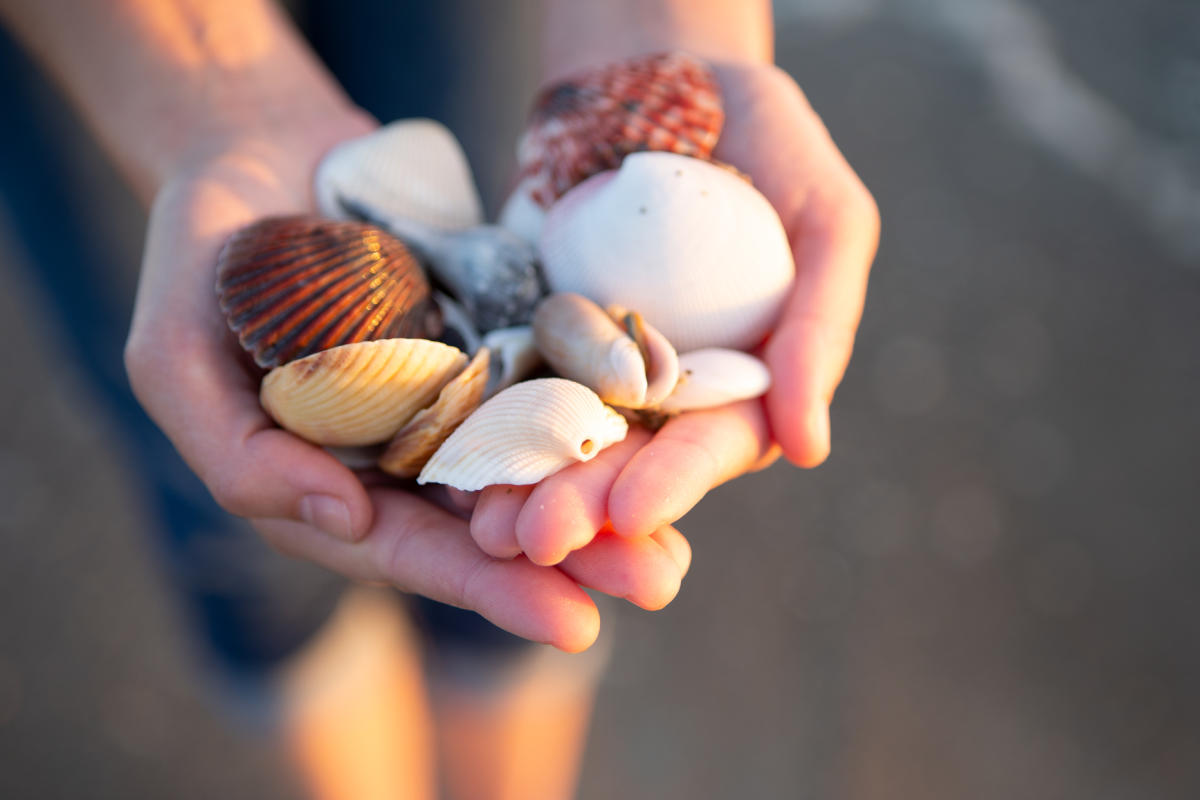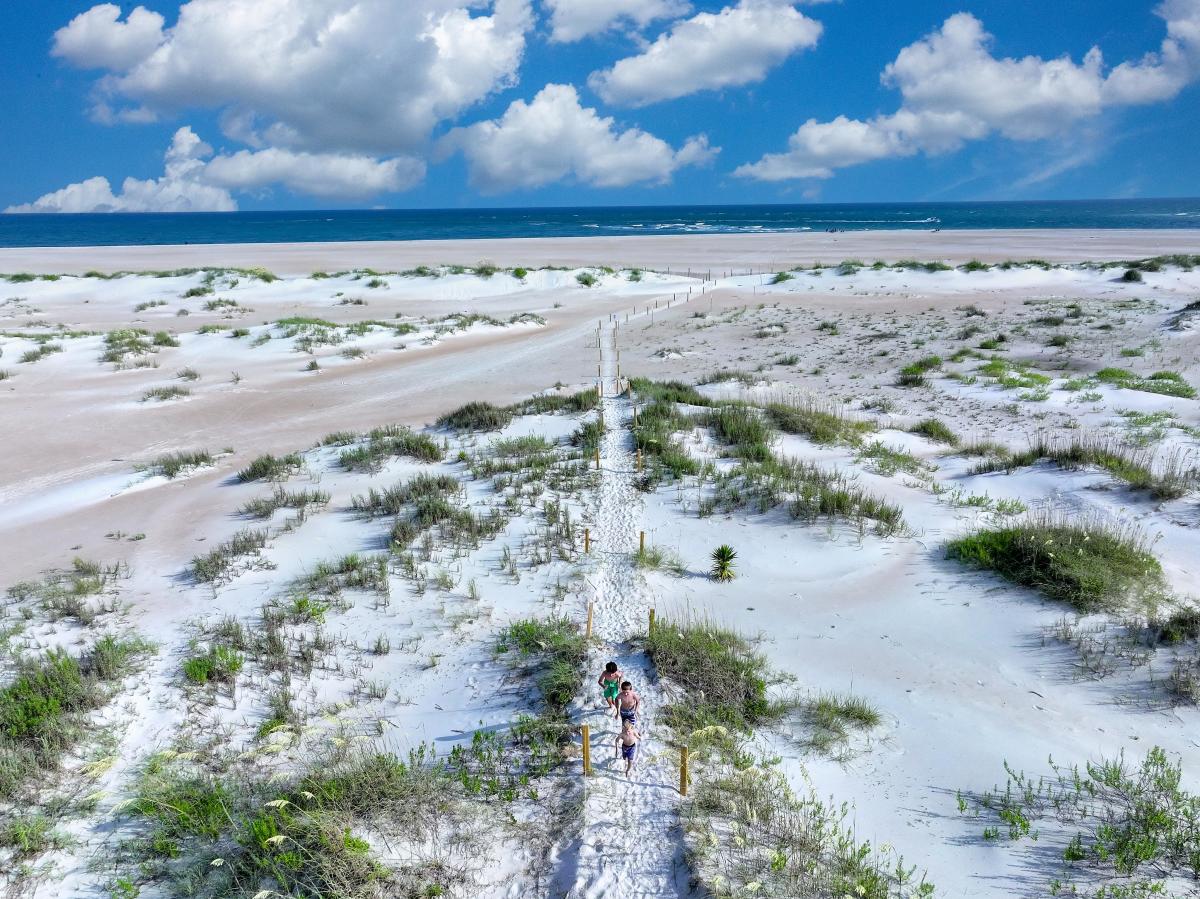The Crystal Coast of North Carolina is the state's premier destination for shelling enthusiasts and beach treasure hunters, offering an unparalleled combination of barrier islands, unique ocean currents, and diverse marine ecosystems that create exceptional shell collecting opportunities. This remarkable 85-mile stretch of coastline benefits from the convergence of the Gulf Stream and Labrador Current, which carries shells from both tropical and temperate waters to create one of the most diverse shell collecting environments on the Eastern Seaboard. From the easily accessible beaches of Fort Macon to the remote shores of Cape Lookout, the Crystal Coast provides year-round shelling adventures for collectors of all skill levels.

Cape Lookout National Seashore: A Sheller's Paradise
Cape Lookout National Seashore represents the crown jewel of Crystal Coast shelling destinations, encompassing 56 miles of undeveloped barrier islands that remain accessible only by ferry or private boat, ensuring that these exceptional shelling grounds remain largely undisturbed by heavy foot traffic. This remarkable national seashore stretches across three main barrier islands—North Core Banks, South Core Banks, and Shackleford Banks—each offering unique shelling environments from the calm sound-side beaches near the iconic Cape Lookout Lighthouse to the dynamic ocean-facing shores that receive fresh shell deposits with every tide and storm system.

Signature Shell Species and Rare Finds
The waters surrounding Cape Lookout support an extraordinary diversity of marine life, resulting in shell deposits that include both common Atlantic species and rare treasures that make this destination legendary among serious collectors. Regular finds include the graceful angel wings with their distinctive ribbed patterns, glossy olive shells in various sizes, colorful scallop shells, and the prized North Carolina state shell, the Scotch bonnet, recognizable by its distinctive brown and white spotted pattern and sturdy, rounded form. Experienced shellers who venture to Cape Lookout's more remote beaches may encounter truly exceptional specimens such as the rare junonia shell with its striking spotted pattern, massive lion's paw scallops that can span six inches or more, and various species of murex shells with their elaborate spines and ridges.
Shackleford Banks: Wild Horses and Exceptional Shells
Shackleford Banks offers a truly unique shelling experience that combines world-class shell collecting with the rare opportunity to observe wild horses roaming freely along pristine barrier island beaches, creating an unforgettable adventure that captures the untamed spirit of coastal North Carolina. This eight-mile barrier island, accessible via ferry from Harkers Island or Beaufort, remains completely undeveloped and is managed as part of Cape Lookout National Seashore, ensuring that its beaches maintain the pristine conditions necessary for both exceptional shell preservation and the continuation of the wild horse legacy that dates back centuries.

Combining Shelling with Wildlife Photography
The opportunity to observe Shackleford Banks' famous wild horses while shell hunting requires respectful wildlife viewing practices that protect both the animals and their fragile habitat, including maintaining a minimum distance of 50 feet from horses at all times, never attempting to feed or approach them, and being particularly cautious during foaling season when mares may be protective of their young. Photography enthusiasts can capture stunning images of horses silhouetted against sunrise or sunset skies while remaining at safe distances, using telephoto lenses to avoid disturbing these magnificent animals that have adapted to island life over centuries.
The Point at Emerald Isle: Accessible Excellence for All Skill Levels
The Point at Emerald Isle stands out as the most accessible shelling destination along the Crystal Coast, offering exceptional shell collecting opportunities with the convenience of nearby parking, restrooms, and amenities that make it ideal for families, elderly visitors, or anyone seeking high-quality shelling without the logistics of ferry transportation. Located at the western end of Emerald Isle where Bogue Inlet meets the Atlantic Ocean, this dynamic beach environment benefits from unique currents and tidal actions that naturally concentrate shells in predictable areas, making it an excellent location for both novice collectors learning to read beach conditions and experienced shellers seeking productive hunting grounds.

Family-Friendly Shelling Adventures
The Point's unique geography makes it an ideal location for introducing children to the joys of shell collecting, with inlet waters on one side providing safe wading conditions for young explorers and easily accessible tide pools that serve as natural classrooms for learning about marine ecosystems. Families will find an abundance of common but beautiful shells perfect for beginning collections, including colorful coquina shells, smooth moon snails, various whelk shells, and the occasional sand dollar. Essential equipment for family shelling trips includes mesh bags or buckets for each child, small plastic scoops or shovels, magnifying glasses for examining finds, and a basic shell identification guide that helps turn collecting into an educational adventure.
Fort Macon State Park: History Meets Shelling Excellence
Fort Macon State Park offers a unique destination that seamlessly combines outstanding shelling opportunities with rich Civil War history, creating an educational and recreational experience that appeals to diverse interests while providing some of the most convenient and well-supported beach access along the Crystal Coast. Located at the eastern end of Bogue Banks, the park's strategic position creates diverse beach environments ranging from the protected waters of Beaufort Inlet to dynamic ocean shores where changing currents and seasonal patterns deposit an impressive variety of shells throughout the year.

Park Amenities and Visitor Services
Fort Macon State Park provides exceptional infrastructure that makes shelling accessible and enjoyable for visitors of all ages and physical abilities, including ample parking areas, clean restroom facilities, outdoor showers for rinsing off sand and salt water, picnic areas for extending beach visits, and educational exhibits that enhance understanding of coastal ecosystems and maritime history. The park's professional interpretation programs often include guided beach walks that combine shell identification with lessons about coastal ecology, Civil War history, and the ongoing conservation efforts that protect these valuable natural and cultural resources for future generations.
Essential Shelling Equipment and Techniques
Successful shelling along the Crystal Coast begins with assembling the right equipment for your skill level and collecting goals, starting with basic essentials such as mesh bags that allow sand to drain while retaining shells, small scoops or shovels for digging in promising areas, and waterproof containers for protecting delicate specimens during transport back from the beach. Beginning shellers should invest in a quality shell identification guide specific to the Atlantic Coast, a magnifying glass for examining fine details, and comfortable water shoes that protect feet while providing good traction on wet sand and rocks.

Timing Your Shelling Adventures
Understanding tidal patterns and seasonal variations dramatically improves shelling success along the Crystal Coast, with the most productive collecting typically occurring during the two hours before and after low tide when maximum beach area is exposed and shells are easiest to spot against wet sand. Spring tides, which occur during new and full moons, create the lowest low tides and highest high tides, exposing areas that are usually underwater and often revealing shells that have been hidden for weeks or months.
Proper Shell Collecting Etiquette
Responsible shell collecting along the Crystal Coast requires understanding and following both legal regulations and ethical guidelines that ensure these natural treasures remain available for future generations while protecting the marine ecosystems that create them. Always collect only empty shells, leaving live mollusks undisturbed to continue their ecological roles, and be aware that some areas have specific restrictions on collecting, including prohibitions on taking shells from certain protected areas or limits on quantities that can be removed.
Identifying Your NC Coast Shell Treasures
Successfully identifying shells found along Crystal Coast beaches enhances both the collecting experience and understanding of the diverse marine ecosystems that produce these natural treasures, with modern field guides and smartphone apps providing instant access to identification tools that help distinguish between similar species and provide fascinating details about the creatures that created each shell. Key identification characteristics include shell shape and size, surface texture and patterns, color variations, the number and arrangement of ridges or ribs, the shape of the opening (aperture) in gastropod shells, and the hinge structure in bivalve shells.

Common Species and Their Habitats
The most frequently encountered shells along Crystal Coast beaches reflect the diverse habitats present in local waters, from shallow sound environments to deeper offshore areas, with common finds including large whelk shells from channeled whelks and knobbed whelks that inhabit sandy bottoms, distinctive moon snail shells with their characteristic round shape and large aperture, various ark shells that live attached to hard substrates, and colorful scallop shells from bay scallops and calico scallops that swim freely in shallow waters. Whelk egg cases, often called "mermaid's purses," appear as long chains of papery pouches that originally contained developing whelk embryos.
Plan Your North Carolina Shelling Adventure Today
The Crystal Coast's exceptional shelling beaches offer year-round opportunities for discovery and adventure, with each featured location providing unique advantages that cater to different preferences and skill levels—from the remote wilderness experience of Cape Lookout National Seashore to the convenient accessibility of The Point at Emerald Isle, and from the wild horse encounters at Shackleford Banks to the historical context of Fort Macon State Park. Planning your successful shelling trip involves coordinating ferry schedules for barrier island access, checking tidal charts for optimal collecting times, and selecting accommodations that provide easy access to your preferred beaches.



